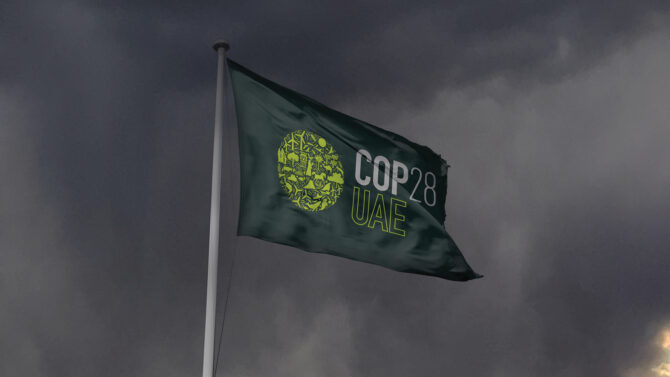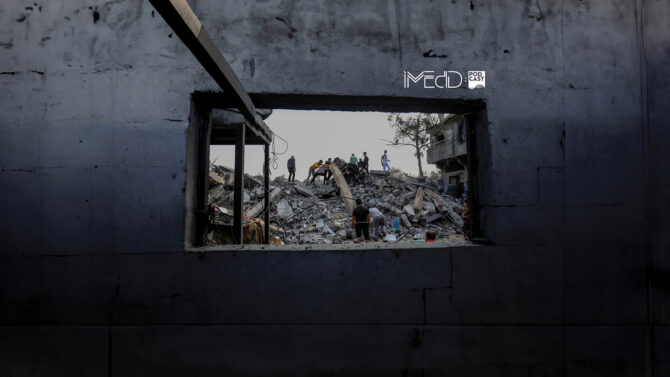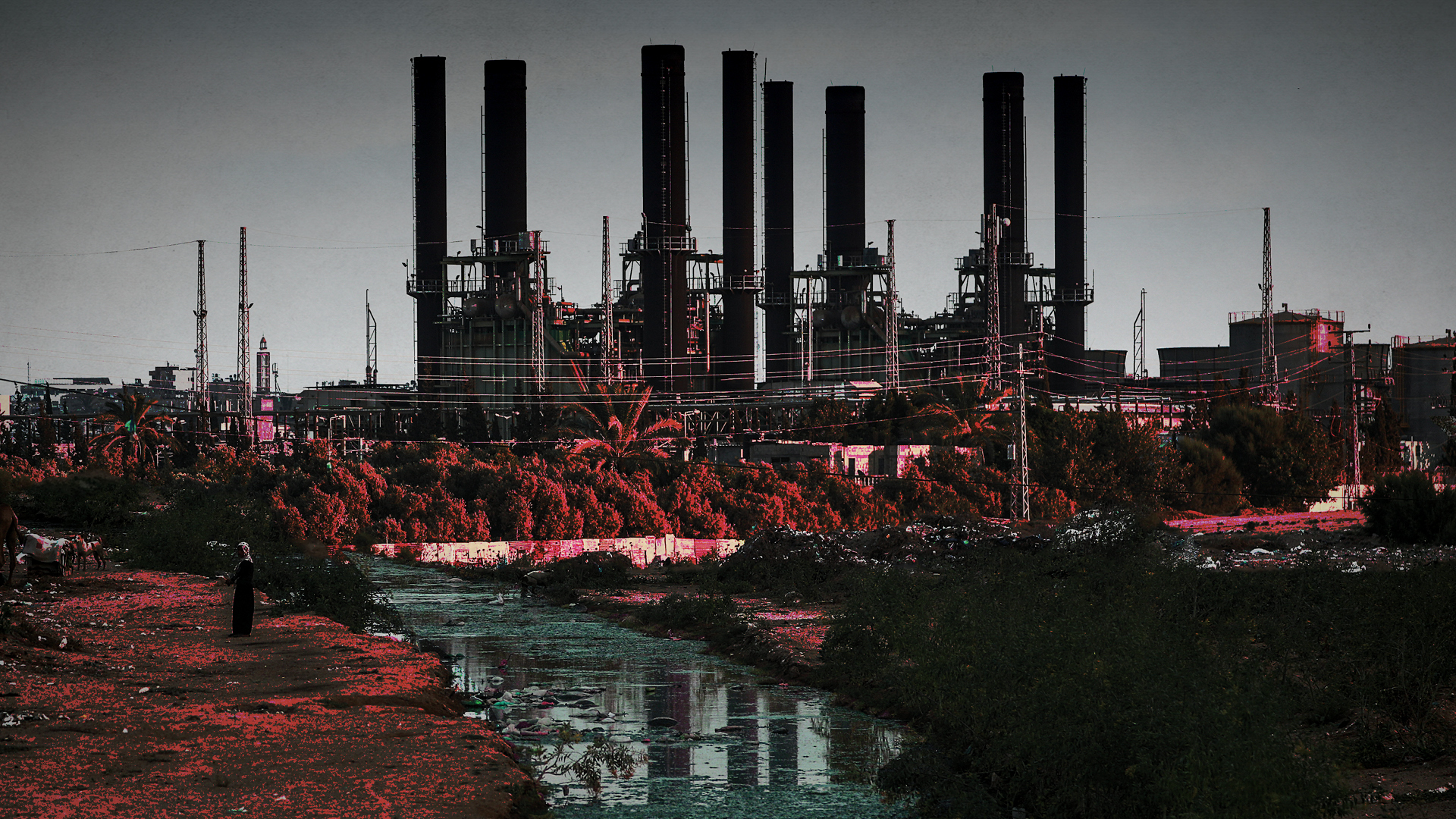iMEdD investigates and visualizes the shortages of basic infrastructure in the occupied territories, which have contributed over time to an underlying health crisis for the population, which has intensified since the beginning of the war.
COP 28: Climate diplomacy, the Israel-Palestine conflict and the global fossil fuel landscape

As 2023 came to an end, we witnessed the unfolding of COP 28, the world’s biggest international climate summit.
After 117 days of Israel’s war in Gaza, more than 26,751 casualties have been recorded, and in addition, water and electricity supply infrastructure in the occupied territories has been affected. However, this is not a new situation, as these basic infrastructures have suffered problems over time.
The Gaza Strip has been under a blockade since 2007, which intensified after the Hamas strike on October 7 and the subsequent launch of Israel’s war on Gaza. Looking back at the historical context of the energy situation in Gaza, we see that since the Six-Day War of 1967 the region has been heavily dependent on Israel for energy. A typical example is Military Order No.158 issued in November 1967 by the Israeli General Staff, which states that the Palestinians cannot construct any water supply facility without the permission of the Israeli army. In addition, since June 2007, there has been a ban on the import of building materials, such as cement and iron, necessary for the construction of water and sanitation infrastructure.
Basic water shortages
According to the United Nations, access to water is a fundamental human right. Specifically, the UN Committee on Economic, Social and Cultural Rights states that “the human right to water provides everyone with the right to adequate, safe, physically accessible and affordable water for personal and domestic use.” The situation in the Gaza Strip, however, is diametrically opposite to what the UN describes.
The WASH Cluster, a UN NGO focusing on humanitarian water and sanitation management, notes that eight out of ten households in Gaza do not have access to safe water, while OCHA reports that 97% of water in Gaza is not fit for human consumption. An indicator of the situation after the war began is that the shelter in the Khan Yunis area had the capacity for just one toilet per 600 people.
In the Gaza Strip, according to the WASH Cluster, the population of 2,226,544 Palestinians needs a total of 33,400 cubic liters of water to meet its needs. The lack of the necessary amount of safe water leads Palestinians to engage in unhealthy practices such as drinking contaminated water from brackish springs and agricultural wells, or reusing household water. These practices have a significant impact on the health of the local population, causing infections, dehydration and skin diseases. Peter Gleick, co-founder of the Pacific Institute in Auckland, who specializes in climate change and water conflicts, said that “the conflict is leading to a massive disruption in the availability of safe water and sanitation services, and that in turn will have severe consequences for human health in the form of water-related diseases, malnutrition, and the spread of illness.”
There are two main ways of supplying drinking water in Gaza, on the one hand by pumping groundwater and on the other by desalinating seawater or disinfecting contaminated water, as Noura Kayal, independent researcher with a background in water diplomacy in the context of international relations for peace and security, tells us.
“There’s an aquifer where all the water is under Gaza, which starts just on the edge of Egypt in the Egyptian part of Rafa, 100 meters or more maybe below the surface and extends into Israel” as described by Mark Zeitoun, director of the Geneva Water Hub, who has been involved in water negotiations in the Middle East and Africa. Its distance from the land surface makes it easily accessible, but coastal groundwater has been contaminated due to water over-extraction and ineffective waste management.
Moreover, according to UNICEF, since the beginning of the conflict, only 5% of water production has continued to function normally and the purchase of bottled water has become impossible. As Peter Gleick noted, “Gaza has always had a difficult water situation, with a large population but an extremely limited and often contaminated water supply.” These are sanitary conditions that could lead to a widespread humanitarian crisis. Rick Brennan, the UN World Health Organization’s Emergency Manager for the Eastern Mediterranean region, mentioned that shortly after the war began that hospitals were one step away from a major water and sanitation crisis. Because of the lack of water, they are finding it difficult to sterilize even surgical instruments. This adverse situation can lead to the spread of water-borne diseases such as cholera and dysentery.
The relationship between electricity and access to clean water
Peter Gleick spoke at iMEdD about the importance of electricity for water collection, transport, treatment and distribution, and sanitation. More specifically, for pumping groundwater or desalinating seawater, electricity consumption is a prerequisite.
As Mark Zeitoun points out, for these processes “You need a lot of electricity, so if there’s no electricity, you can’t get that water.” In other words, the lack of electricity also means the inability to access clean water, a necessary commodity for nutrition and personal hygiene.
There is an interdependence between electricity-clean water-sanitary status, which is shaken in times of conflict. “This is what we call the reverberating effects of attacks on and damage to water systems” , notes Mark Zeitoun. And he further points out that “it can have such a devastating impact long after the dust has settled far beyond the blast zone of the attack.”
In the same vein, Noura Kayal, referring not only to Gaza but also to other historical examples, the Basra conflict in Iraq and the war in Lebanon, said that “you target one thing and it reverberates to all the others”.
The Gaza Strip is electrified by Israel and by its own power station. Fluctuations in the electricity supply have put key infrastructure such as hospitals, schools, water and sanitation infrastructure at risk.
Data from the Gaza Electricity Distribution Company (GEDCO), as cited by OCHA, demonstrates that the Gaza Strip has been experiencing power outages over time, whether in wartime or not. The chart depicts the average hours per day that there was electricity supply in Gaza from 2017 to 2023. Practically half of the day there was no electricity supply, resulting in the aforementioned infrastructure malfunctions.
According to OCHA data, even before the conflict electricity was in a state of uncertainty, for example in September there was electricity supply in Gaza for an average of 12 hours a day, while from October onwards the situation deteriorated significantly. “The system was so fragile that it collapsed really quickly” says Noura Kayal.
Elai Rettig, an academic at Tel Aviv’s Bar-Ilan University and an expert on energy and international relations, says that “about 50% of its electricity came from Israel through Israeli power plants”. The remaining energy needs are met by the Gaza power plant and the import of electricity from Egypt, but still the energy deficit is large.
Since the beginning of Israel’s war in Gaza there has been a complete cut-off of electricity supply by Israel, which until then had been supplying 120 Megawatts of electricity on a daily basis. A parallel power station was operating in Gaza in an attempt to meet energy needs, providing almost half the energy supplied by Israel. The situation worsened after the operation failure of this station, located in the Nouseirat area. Since November, the people of Gaza have suffered a total blackout of electricity. According to OCHA data, energy needs for electricity were only partially met, creating a long-standing situation of malfunctions and shortages.
In order to cope with shortages, Gazans are turning to alternative sources such as generators and photovoltaic panels, which are very costly. These practices are isolated, amateur solutions of necessity with dubious results, and not part of a larger and organized effort to address the problem. The result of this situation is that electrification relies heavily on the consumption of fuel for generators, such as oil.
According to Elai Rettig, “the oil in the Gaza Strip is imported, with most of it coming from Israel, as it is refined in Haifa, and a smaller amount coming from Egypt.” Indeed, it describes oil as “vital for Gaza, as electricity, access to clean water and transport depend on it.
Middle-East expert Petros Papakonstantinou on what could be next in the Gaza war

Petros Papakonstantinou one of the most experienced analysts in international reporting, provides useful insights into the end-of-war scenarios, the possibility of escalation into a regional war in the Middle East, the changing attitude of the West, the coverage of the war and the toll of dead journalists.
Infrastructure through the light of International Law
According to International Humanitarian Law, civilian points of interest that are essential for the survival of the civilian population should not be targeted. As Mark Zeitoun points out, “THE Geneva principles and the protection of infrastructure civilians interpret the laws designed to ensure noncombatants retain access to clean water” At the same time, as Nura Kayal adds, “the first and fourth Geneva Conventions explicitly state that non-military goods should not be targeted.” Beyond these treaties, UN Security Council Resolution 2573 supports the protection of basic infrastructure such as electricity, water and health systems, as if destroyed they can have a very serious impact on the civilian population. In particular, during Israel’s war in Gaza, the validity or otherwise of the rules of international law in the circumstances in which the conflict is being fought raises much debate.
The infrastructure malfunctions in Gaza and the resulting crisis for its inhabitants are a long-standing situation. After the ongoing war, it is questionable whether and when the damage to infrastructure will be restored, and how long term its effects will be, but in the words of Mark Zeitoun, “The conditions of life required by the people of Gaza to survive has been destroyed, at least in part”.
